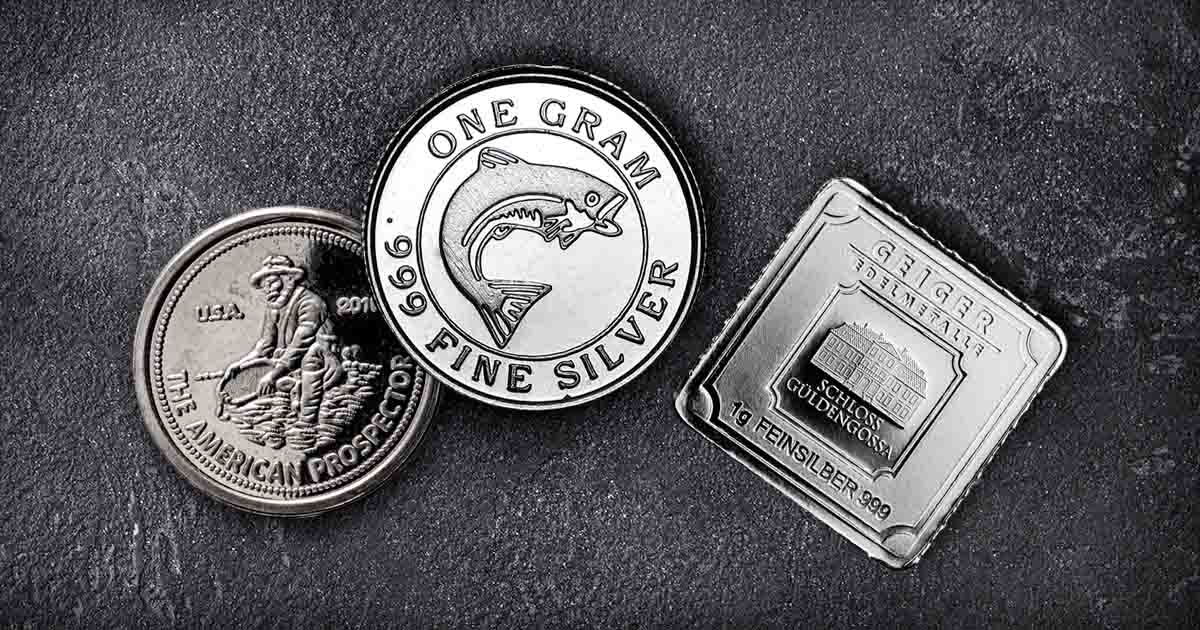
Is it worth buying single grams of silver? Depending on your budget, buying silver by the gram may be a great investment, but it may be worth taking a handful of factors into account before you begin making purchases.
Benefits of Investing in Single Grams of Silver
Affordability
One gram silver bars are less expensive than one ounce silver bars and rounds as a result of their lower mass, making them more accessible. Their price is set by the cost of silver per gram and they provide a lower entry point to investors with limited capital than larger silver products. This affordable entry point helps investors gradually build their silver holdings without substantial up-front costs.
Flexibility in Diversification
Buying one gram silver bars provides enhanced flexibility for diversifying a portfolio by allowing incremental changes for investors keeping an eye on granular detail. Diversification can help reduce risk from a market downturn in other assets, and holding silver as part of a balanced portfolio can reduce overall risk.
Portability and Convenience
Storing one gram silver products requires minimal space as a result of their small footprint. Their compact size also makes for easy transportation.
Ease of Trade
If you are buying precious metals to use in times of economic uncertainty, smaller silver products may be especially useful for barter and trade. Their relatively lower individual value makes them highly practical for everyday transactions and adding single grams of silver to an emergency or “bug out” bag is fairly inexpensive.
Disadvantages of Investing in Single Grams of Silver
Growth Potential
Although single grams of silver impart liquidity, they lack the growth potential that larger silver products like single ounces and kilograms can provide. During times of price growth, the value one gram silver products gain is proportionately low, which makes them less appealing for investors who are seeking substantial short term gains from market fluctuations.
Storage Considerations
If you invest heavily, single grams of silver may be cumbersome to store in an organized fashion compared to one kilogram silver bars and other large silver products.
Handling Risks
Smaller products, like one gram silver bars, may be more susceptible to scratches and damage than larger products. A comprehensive storage solution may mitigate this risk.
Liquidity
One of the considerations to keep in mind when purchasing less commonly traded units of silver is liquidity. If there is not a robust market for the product you are purchasing, liquidating it may be more difficult than for more commonly sold items. For instance, if the price of silver increased rapidly overnight, the value of a one gram silver bar would also grow, but it would be more work to find a buyer than it would be to find a buyer for a one-ounce American Silver Eagle. However, if your goals include being able to utilize single grams of silver as currency in the event of a crisis, single gram silver bars could make an excellent investment. They have inherent value and are conveniently sized and portioned out to trade for basic goods like small meals or fuel.
Premium Considerations
Another factor to keep in mind is the higher premium. One way of looking at the premium of a one gram silver bar versus the premium on a 100 gram silver bar is to consider how the production costs are spread over a greater number of comparable units. A one gram silver bar is a small version of its 100 gram counterpart.
The larger silver bar may have a substantially higher premium but comparing the base unit of the gram, it affords a lower premium per gram. With a lower premium, it will take fewer or smaller market movements to recoup the price of that premium.
This same logic applies to even larger formats, a silver 100 oz bar, for example, spreads production costs across far more silver, resulting in some of the lowest per-ounce premiums available to investors. For those thinking long-term or aiming to maximize silver weight for cost, these large bars represent a practical and efficient strategy.




